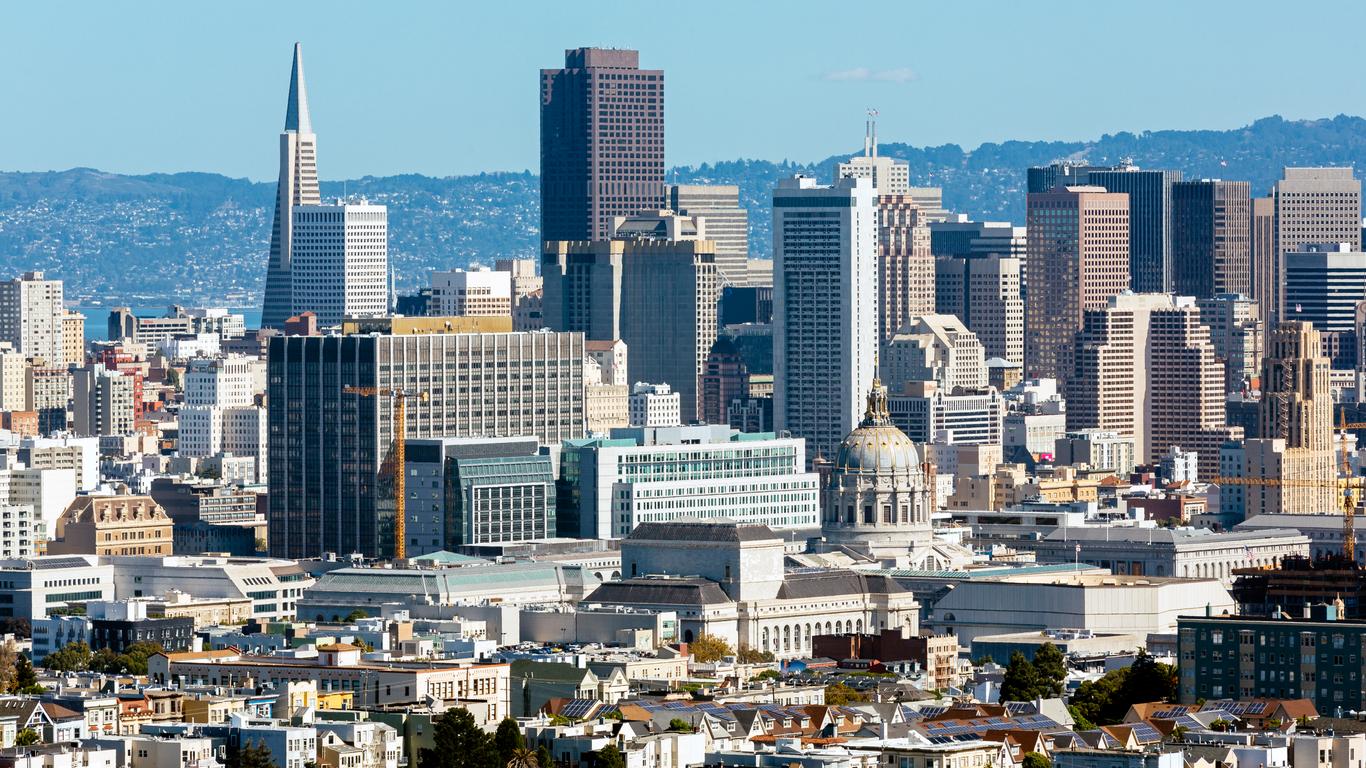Housing many of San Francisco’s most important government buildings and cultural institutions, the Civic Center clusters over a few blocks north of Market Street. Its central location and open spaces have made it the scene of numerous anti-war protests, as well as rallies led by the famed gay-rights activist Harvey Milk.
The Beaux-Arts City Hall with its elaborate dome is the focal point of the Civic Center, designed by architect Arthur Brown, Jr. and fronted by the expansive Civic Center Plaza. The Supreme Court of California stands proudly to the north across McAllister Street, while the old San Francisco Library to the east now houses the Asian Art Museum, boasting one of the most outstanding collections of Asian Art in the world. The Public Library now occupies a more modern building to the south, with the late 19th century Pioneer monument in between. The War Memorial Opera House lies to the west of the City Hall with its classic Roman Doric order and has been home to the San Francisco Opera since it opened in 1932, as well as the location of the UN Charter signing in 1945. Together with the grand Herbst Theater to the north, it comprises the War Memorial and Performing Arts Center.
The Civic Center is easily accessed from the Market Street tram stops just to the south, which connects it with Union Square and the Embarcadero to the east. It’s also just a short walk from the Civic Center/UN Plaza Station, and as it only covers a couple of blocks, the district can easily be explored on foot.
The Civic Center was designed in the early 20th century following the devastating earthquake and fire of 1906 that destroyed the previous City Hall. The Beaux-Arts building which now stands was completed in 1915, just in time for the Panama-Pacific Exposition, while the War Memorial Opera House and Veterans Building, together with the San Francisco Library, were completed during the 1920s and 30s.





